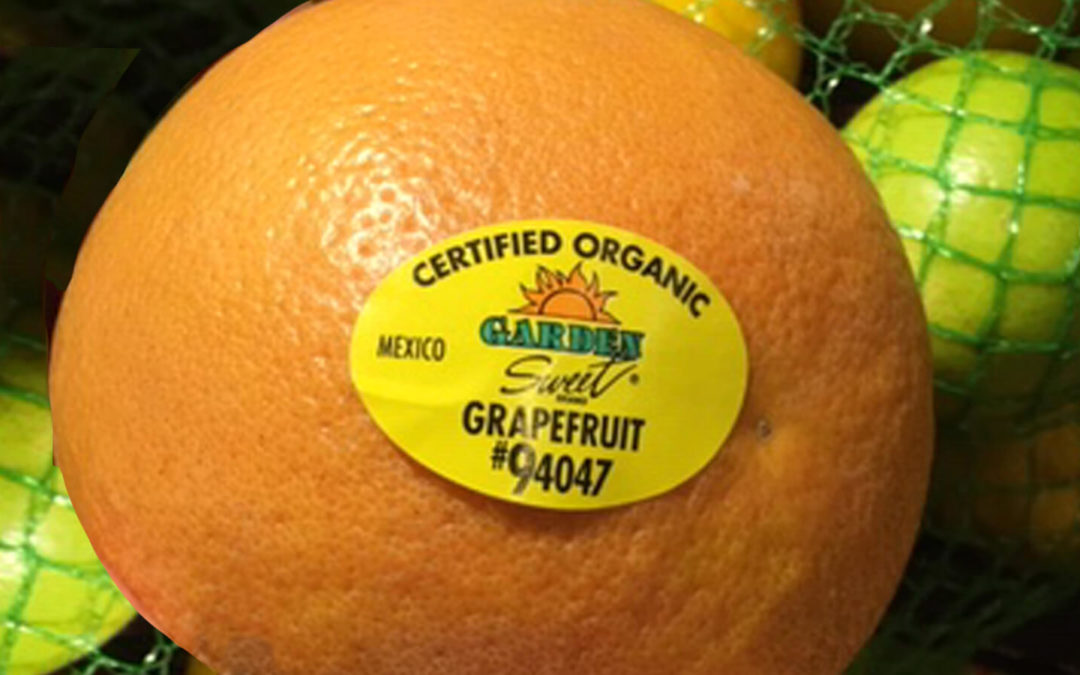What’s with those little stickers stuck to fruits and veggies?
Those stickers have PLU (price look-up) codes made up of numbers describing what type of produce you are buying, and they are markers indicating the quality of produce.
A four-digit code beginning with a 3 or a 4, (image below) means the produce is conventionally grown, which really means it has higher amounts of pesticide residues. Many people will argue that conventional produce does not contain the same nutritional value as organically grown produce, but this is not true.
Herbicides and pesticides smother conventional fruits and veggies.
I cannot emphasize enough the importance of food quality when you are rebuilding from a chronic health issue or disease, or even wanting to prevent disease and stay healthy. Yes, conventionally grown produce contains tons of nutrients and phytochemicals to stave off disease, but it also comes with cancer-causing, and hormone-disrupting chemicals—all of it.
Herbicides and pesticides are linked to: cancer (lymphoma, leukemia, brain, breast, and prostate), thyroid disease, hormone abnormalities, obesity, Parkinson’s disease, Alzheimer’s disease, diabetes, and more.
Here is an incredible document (downloadable PDF) from Consumer Reports describing the differences between conventionally grown produce vs. organic: https://article.images.consumerreports.org/prod/content/dam/cro/news_articles/health/CR_FSASC_FromCroptoTablePesticides_Mar2015.pdf
Here is another downloadable PDF from Beyond Pesticides: https://www.beyondpesticides.org/assets/media/documents/health/pid-database.pdf
Check out this website for info on pesticides in produce. Some of these items are called the “dirty dozen”: https://www.ewg.org/foodnews/full-list.php
A five-digit number starting with 9 means the food item is organically grown. Eating organic is the obvious choice when choosing fruits and vegetables. According to the USDA, organic produce has little pesticide residue on it, which is the reason to buy organic. Again, organic and conventional produce have similar nutritional value, but organic produce has little pesticide residue compared to conventionally grown fruits and veggies.
A five-digit code starting with 8 means the food item is genetically modified GMO), which means its genes are been modified in a laboratory.
Warning! Genetically modified foods are also laced with Monsanto’s disease-causing pesticide “Roundup” (glyphosate)—which is a serious health hazard.
Check out this research article on GMO’s and the herbicide Roundup: http://www.organic-systems.org/journal/92/JOS_Volume-9_Number-2_Nov_2014-Swanson-et-al.pdf
Compounding the problem, GMO foods aren’t always labeled with PLU codes, and companies can label these foods as conventional.
Even today, we have to be modern-day hunter-gatherers, foraging and sifting through our foods and locations where we buy them to get the healthiest food sources in order to prevent disease and be healthy.
Here’s to Victory!

Recent Comments